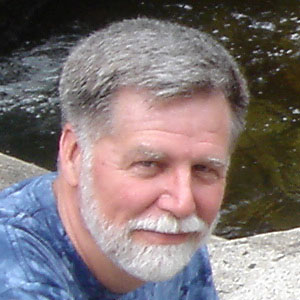About Mike |
| I don't get out to photograph very often, and when I do get the opportunity, I don't take many pictures because of my choice of equipment. That's OK with me - much of the reason I enjoy landscape photography is just being out in beautiful places. I also appreciate the discipline of using a large format camera, and the challenge of using a digital scanning back outdoors. View cameras and scanning backs aren't known for their speed or ease of use, but when everything cooperates, the results from these big digital cameras can be spectacular - huge, full color images with unsurpassed clarity, detail, and dynamic range. Such high-quality information allows these photographs to be examined quite closely without any visible degradation, providing a greater sense of "being there" than has ever been possible before. In fact, it is easy to see more in these photographs than by standing where the camera was with a pair of high-power binoculars! |
 |
I first discovered electricity by sticking my mother's car keys into a wall outlet when I was two years old, and I've been playing with electronics ever since. I dropped out of engineering school because I didn't like the hands-off formality of classroom instruction. After spending a few years repairing foreign cars, stereo equipment, and televisions, I moved to the San Francisco Bay Area and progressed through a typical engineering career anyway, working for a variety of technology companies to develop audio processing equipment, automation systems, a digital film recorder, and biotechnology research instrumentation. Like many engineers, I became interested in photography for its unique combination of technology and creativity. I set up a modest color darkroom so I could make my own Cibachrome prints from 35mm and medium-format transparencies, using an early computer to keep track of my print adjustments in a database program. I watched with great interest as computers became more involved with imaging, and eventually started designing a large-format film scanner in my spare time, while developing optical detection systems for my day job. One day at work, I read an advertisement for a new trilinear image sensor developed by Kodak that had color filters built into the sensor, and immediately realized that this new sensor could make my film scanner design much simpler and faster by replacing a monochrome sensor and a separate color filter wheel. After sleeping on this good news, I awoke to the realization that Kodak's new sensor would allow me to take color photographs directly, eliminating the need for film by putting a full-color scanner directly into the camera. I immediately put aside my unfinished film scanner design, and started working in earnest on a miniature scanner that would fit into a conventional 4x5 inch view camera. My day job moved to Los Angeles, but I stayed behind and devoted myself full-time to the "scanning camera" project, eventually licensing my design to Dicomed, Inc., a Minnesota-based company that built and sold over 900 of this first-generation product. After Dicomed got involved with a very expensive instant-capture digital camera system and ran into trouble, I decided to build and sell the second-generation Better Light digital scanning backs myself, with the help of several former co-workers and exclusive distribution by Calumet Photographic. Better Light has produced over 1,500 of these large format digital capture devices to date, and they remain unsurpassed for their ability to deliver the highest image quality for a variety of demanding applications. Kodak discontinued most of their trilinear image sensors a few years ago, and Better Light is now winding down production. The company will continue to support its products for the foreseeable future, while I become more involved with making and selling fine-art photographic prints of my own and other Better Light photographers' original work. Thanks for visiting our new gallery! |